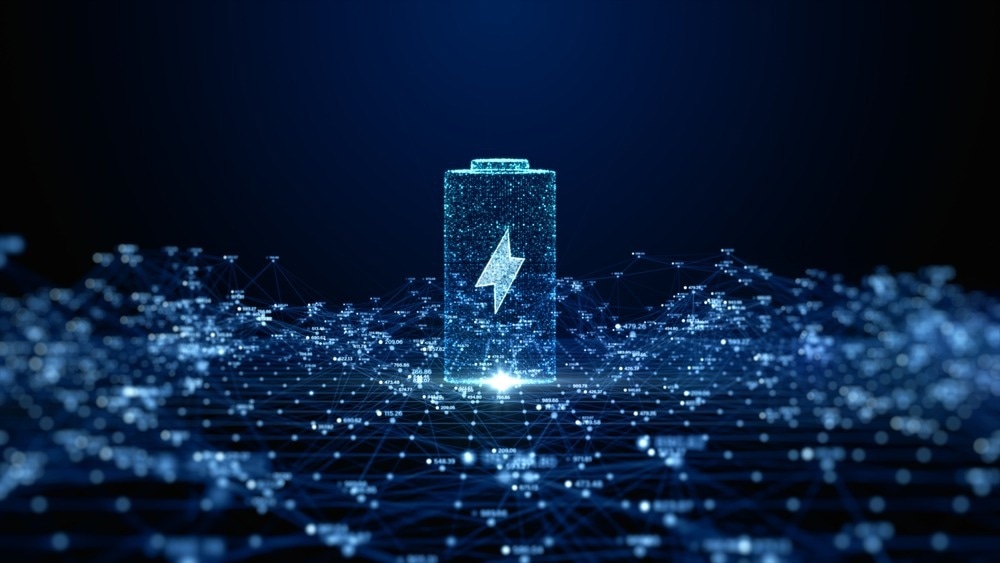Researchers from Durapower Technology Singapore Pte Ltd and Nanyang Technological University, Singapore (NTU Singapore) have created a cloud-based solution that can significantly increase the safety and lifespan of lithium-ion batteries.

Image Credit: KanawatTH/Shutterstock.com
As the world shifts toward renewable energy and electric vehicles (EVs), the need for efficient, safe, and long-lasting batteries has become an urgent priority. Similarly, as cloud computing has grown in popularity, so has the demand for energy storage systems for data centers.
This innovative technology, powered by the Internet of Things (IoT) and Artificial Intelligence (AI), can assist companies and data centers in lowering the risks associated with lithium-ion batteries, including possible fire hazards, particularly in hot and humid countries like Singapore.
This study project, led by NTU Assistant Professor Hung Dinh Nguyen and Durapower CEO Mr Kelvin Lim, is funded by the Energy Market Authority (EMA) and the National Research Foundation, Singapore (NRF) as part of the Research, Innovation, and Enterprise (RIE) 2020 Plan.
A Fire & Explosion Management System (FXMS) with high accuracy, real-time monitoring and predictions of battery conditions for up to five years was developed over the course of the last four years by the joint team using Digital Twin technology, which creates a virtual replica of an actual battery to mimic the one in real life.
With up to 95% accuracy, the FXMS can determine when it will be a good idea to replace a battery pack and provide ongoing monitoring of which battery pack is most likely to fail for up to six months ahead of time. It is now being tested on the NTU Smart Campus in an energy storage system the size of a container.
Given that lithium-ion batteries demand a lot of resources and energy to produce, the team believes that their patent-pending technique can help extend the life of lithium-ion batteries by more than 50% and significantly reduce carbon dioxide emissions by decreasing battery waste.
Our main aim is to enhance the safety and efficiency of large-scale energy storage systems and Electric Vehicles, as a single faulty cell can spark off a chemical fire that is extremely hard to put out. Since our technology is cloud-based, it is scalable and can easily be adapted for consumer electronics such as mobility devices, laptops and mobile phones, helping the batteries to last longer and in the long run, reduce electronic waste and carbon footprint.
Hung Dinh Nguyen, Assistant Professor and Cluster Director, Renewables’ Integration & Microgrids, Energy Research Institute, Nanyang Technological University
Chief Executive Officer of Durapower Group, Mr Kelvin Lim, added, “With the global mandate for sustainability, smart mobility, and a carbon neutral future, we’re seeing widespread adoption of energy storage systems and uptake of EVs. The development of a customizable software platform like FXMS furthers efforts toward robust and comprehensive digital infrastructure based on Machine Learning and Artificial Intelligence to capture increasingly complex battery and energy usage in the EV market. The outcomes from this joint initiative with the EMA, NTU and Durapower on FXMS will enable better decisions based on data and analytics, facilitating optimal battery health, performance, and longevity.”
The relationship between NTU and Durapower, according to NTU Vice President (Industry) Professor Lam Khin Yong, shows how innovative technology in the green economy could be pioneered through a robust academia-industry partnership supported by the Singapore government.
NTU has a strong track record in working closely with leading industry players, to develop innovations that can meet the key challenges in their sector. Combining our deep expertise in areas such as sustainability, battery technology and deep tech like IoT and AI, with Durapower’s industry knowledge and experience, we can propel innovation quicker and boost the competitiveness of our local SMEs globally in fastrising industries such as EVs and energy storage systems.
Lam Khin Yong, Professor and Vice President (Industry), Nanyang Technological University
Digital twins, or virtual copies of real-world buildings or objects, are a key innovation in the infocomm sector because AI recommendations allow for safer and more efficient decision-making. Additionally, the NTU 2025 Strategic Plan, which was introduced earlier this year, heavily supports this study area through its Innovation & Entrepreneurship initiative.
The digital twin enables direct battery management in the case of massive battery storage systems, such as those used for data centers or renewable energy grids. This includes rerouting the electrical load to extend the life of weaker batteries or to temporarily stop the utilization of a battery pack until its replacement.
When battery packs, such as those seen in electric vehicles, are older, they are frequently recycled into new lithium-ion batteries or used for energy storage. Right now, the ERI@N is working on solutions for every facet of battery storage, from battery manufacturing to battery management systems.
In the future, the NTU team will collaborate closely with Durapower to test their technology on larger data centers and tailor it to fit various battery systems and applications.